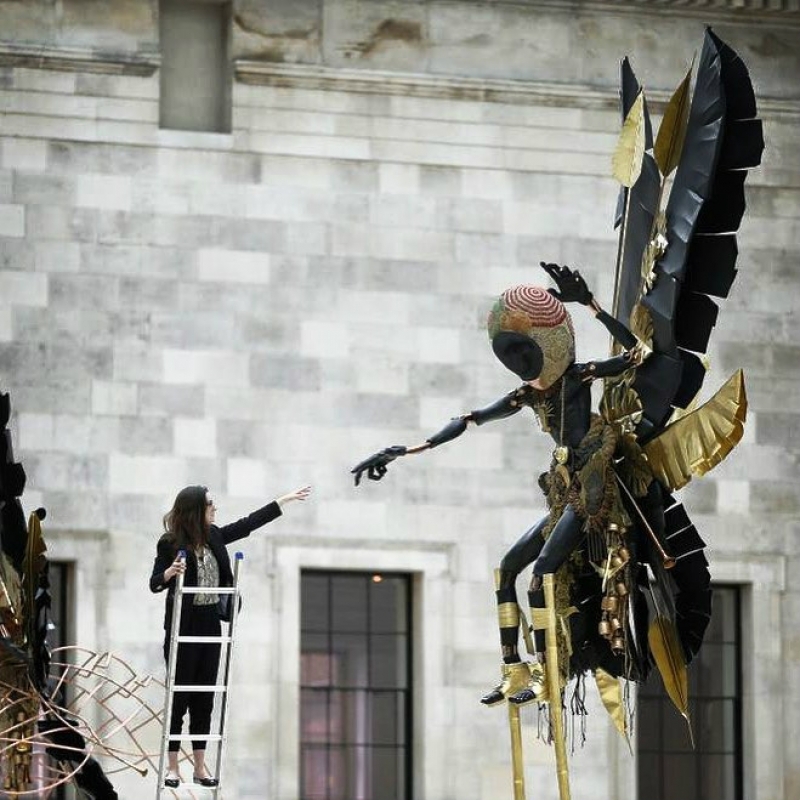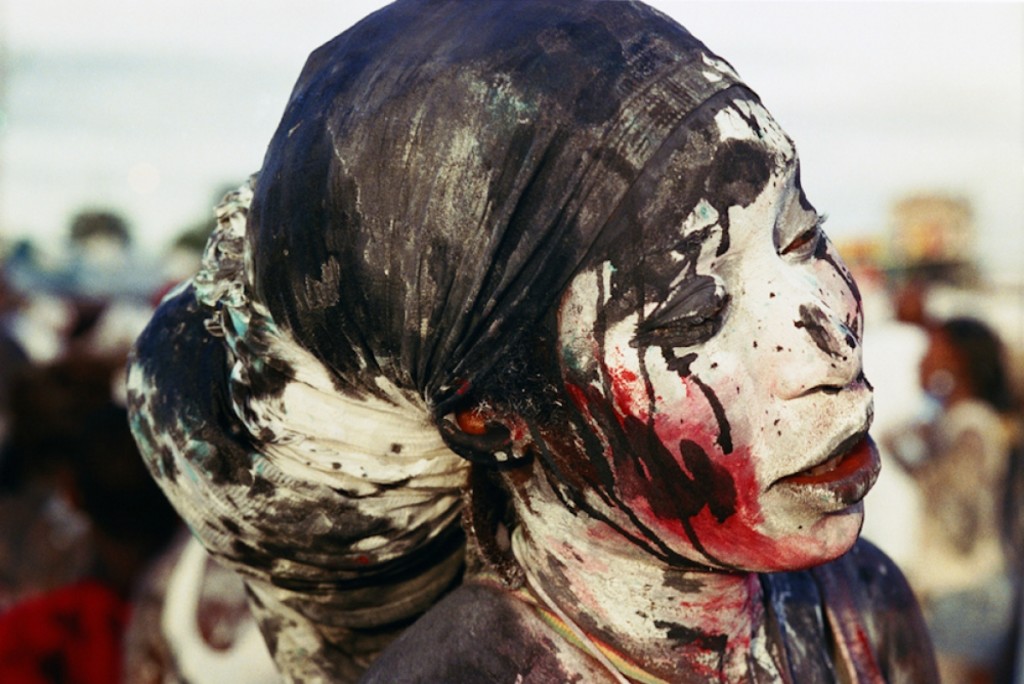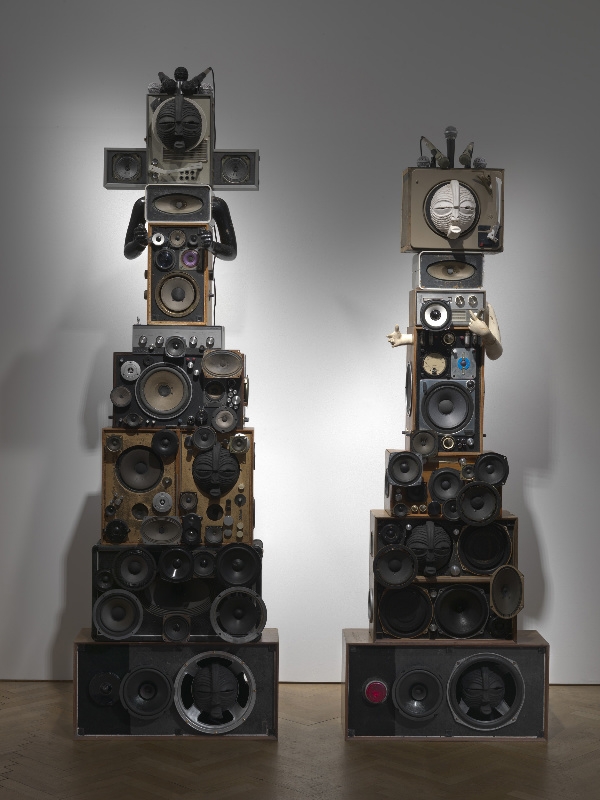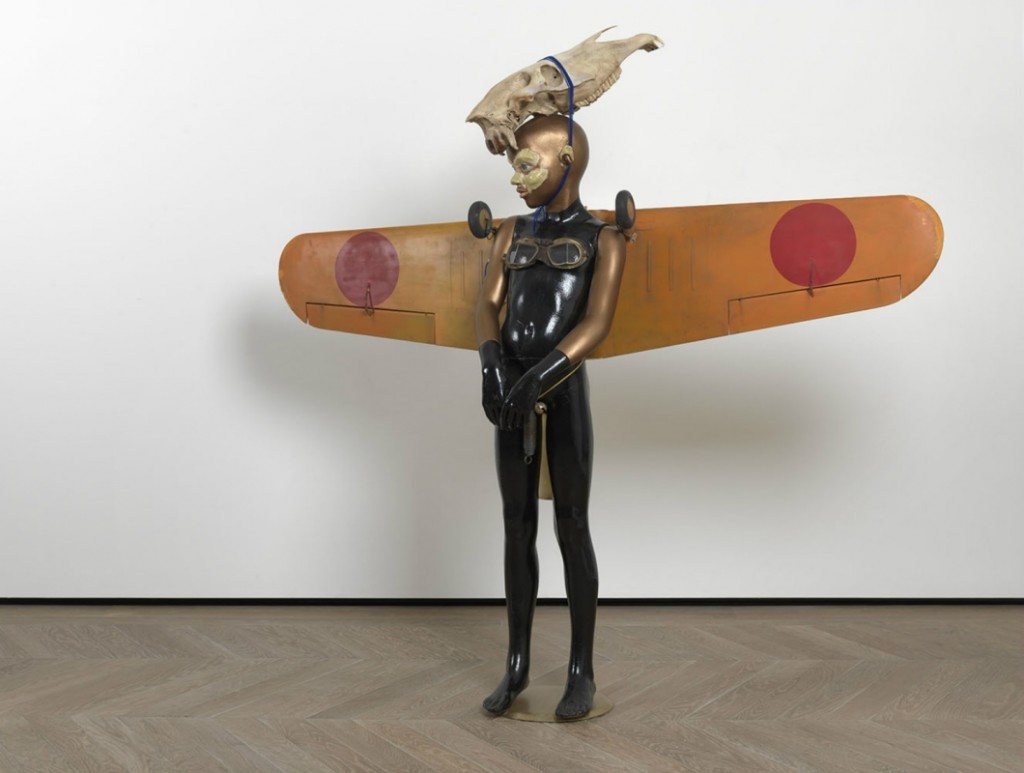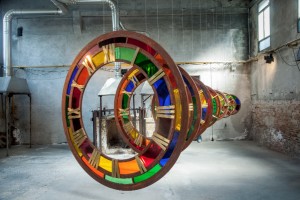
Zak Ové works with sculpture, film and photography
Time Tunnel, 2013.
About Zak Ové and Carnival:
As part of Celebrating Africa at the British Museum the UK-Trinidadian artist Zak Ové has created two Moko Jumbie sculptures. These spectacular seven metre high carnival figures on stilts will be displayed in the Great Court. The male and female figures in striking black and gold costumes are inspired by aspects of African masquerade. The installation of these sculptures will celebrate African contributions to world carnival.
Moko Jumbie, 2015.
The Museum commissioned these figures to coincide with London’s Notting Hill Carnival at the end of August. Moko Jumbie figures became a key feature of carnival in Trinidad in the early 1900s. Oral traditions describe the Moko Jumbie as a guardian of villages who could foresee danger and protect inhabitants from evil forces. Traditionally, Moko Jumbie figures wore long colourful skirts or trousers over their stilts and masks covering their faces. They were sometimes accompanied by dwarfs – represented in the installation in the Great Court by two ‘lost souls’, on loan to the Museum from Zak Ové – who provided a visual height contrast.
Doily, 2015.
Atillah, 2015.
Zak Ové works with sculpture, film and photography. He uses these ‘new-world’ materials to pay tribute to both spiritual and artistic African identity. This Moko Jumbie display is part of a larger body of work that draws inspiration from the Trinidad carnival. The works are born from Ové’s documentation of and interest in the African Diaspora and African history. The artist’s intellectual and creative responses to this history are filtered through his own personal and cultural upbringing in London and Trinidad. The relationship between carnival and Africa derives from the enforced movement of peoples during the Transatlantic Slave Trade. Between around 1500 and 1900, millions of people were transported from West and Central Africa to the Caribbean and North, Central and South America.
The Upsetters (King and Queen), 2013.
Carnival in Trinidad began as a predominantly elite event. In the late 1700s French immigrants arrived on the island to run plantations, bringing with them enslaved Africans. The plantation owners staged elaborate masquerade balls during the carnival season. Africans also brought their own masking traditions of which the Moko Jumbie is but one. Masking for Africans in the Caribbean was a way to connect to ancestors and nature as well as ideas of ‘home’. But traditional masquerades were also used to satirically depict their masters and turn a critical eye on plantation society. After full emancipation in 1838, Africans took over the streets at carnival time, using song, dance and masquerade to re-dress the still existing social inequalities.
Inheritance, 2011-2012.
Today, carnival on the Caribbean islands of Trinidad and Tobago is an all-inclusive national festival which takes place every year before Lent in February or March. It has become a global spectacle that celebrates the rich diversity of Caribbean culture and heritage. Celebrating Africa explores a variety of African cultural issues through a series of events at the British Museum. The season coincides with the tenth anniversary of the Commission for Africa in 2005, which was launched at the British Museum, and the replacement of the United Nations’ Millennium Development Goals (MDGs) with the Sustainable Development Goals (SDGs), many of which are directly relevant to African nations. (text British Museum/Courtesy: Vigo Gallery)

